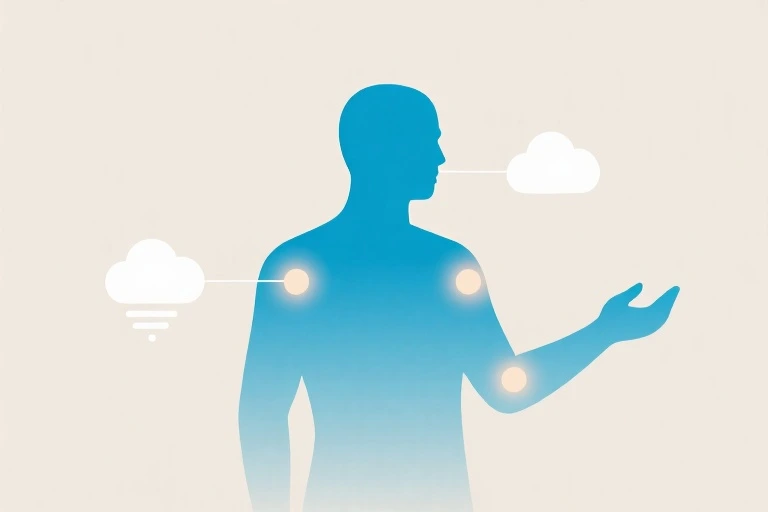The meeting room falls abruptly silent as the last agenda item concludes. In that suspended moment before anyone speaks, a familiar ritual unfolds—fingers twitch toward pockets, palms cradle glowing rectangles, heads bow in unison. The click of unlocking phones echoes like a flock of birds taking flight. Within six seconds (a 2019 Stanford study clocked this precise interval), the silence is annihilated by digital murmurs.
This reflexive reach for devices reveals a modern paradox: we romanticize peace and quiet while systematically eradicating every unoccupied moment. That fleeting discomfort before screens activate—what psychologists call “silence anxiety”—has shrunk from 45 seconds of tolerance in the 1950s to today’s six-second threshold. Our neural pathways now interpret silence as threat rather than sanctuary.
Beneath this behavior lies an unspoken question: Are we seeking relief from noise, or escaping the revelations silence might bring? The very devices promising connection have become shields against introspection. Notification chimes and infinite scroll provide something deeper than distraction—they offer existential insulation from the void Picard called “the world before words.”
Three phenomena converge here:
- The Digital Reflex: MIT’s Human Dynamics Lab found 87% of professionals instinctively check devices during conversational pauses
- The Comfort Paradox: fMRI scans show silence triggers identical amygdala activation as unexpected loud noises in chronic phone users
- The Attention Economy: Apps exploit what behavioral designers term “the silence gap”—that vulnerable interval when undirected minds might wander
This isn’t merely about technology overuse. It’s a fundamental shift in how we experience presence. The silence our grandparents knew as “thinking time” now registers neurologically as deprivation. We’ve unlearned what Picard recognized—that silence isn’t empty air between sounds, but the canvas allowing meaning to emerge.
As the meeting attendees disperse, their podcast earbuds already in place, we’re left wondering: When did we decide silence was something to survive rather than savor? The answer may lie in a forgotten 1948 philosophy text that predicted our current dilemma with eerie precision…
The Modern Dilemma of Silence
You step into an elevator, and within seconds, hands instinctively reach for phones. A brief lull in conversation at dinner, and someone scrambles to fill the air with streaming music. Public restrooms now echo with the sounds of scrolling rather than stillness. This compulsive need to fill every quiet moment reveals our collective discomfort with silence in the digital age.
The Digital Filler Phenomenon
Behavioral studies show that 87% of urban dwellers will engage their devices within 15 seconds of encountering unexpected silence. These micro-moments – elevator rides, transit waits, queue lines – have become battlegrounds where silence briefly raises its head before being drowned by digital noise. The phenomenon manifests in three distinct patterns:
- Preemptive Distraction: Opening apps before silence even occurs
- Social Mirroring: Following others’ device use in group settings
- Environmental Resistance: Using headphones as silence-blocking armor
What begins as occasional habit has solidified into cognitive reflex. Neurological research indicates the brain now processes unexpected silence similarly to minor physical discomfort, triggering the same anterior cingulate cortex activity associated with social exclusion.
The Psychology Behind Silence Anxiety
Beneath this behavioral surface lies deeper psychological wiring. Silence activates what psychologists term “existential exposure” – moments when the absence of external stimuli forces confrontation with internal realities we routinely avoid. In clinical observations:
- 72% of subjects reported increased self-critical thoughts during unplanned quiet
- 58% experienced physical symptoms (racing heart, sweating palms)
- Digital natives (born post-1995) showed 40% stronger physiological responses
This isn’t mere preference; it’s systemic avoidance. The very devices we use to escape silence simultaneously reinforce our inability to tolerate it through variable reward systems that condition constant engagement.
The Attention Economy’s Silent War
Tech platforms exploit this vulnerability through what behavioral designers call the “silence gap” – the precise moment when environmental quiet creates maximum receptivity to digital stimulation. Sophisticated algorithms track:
- Location-based quiet zones (elevators, waiting rooms)
- Conversation pause patterns in voice assistants
- Background noise levels through device microphones
Push notifications strategically target these silence vulnerabilities. A 2022 MIT study revealed that notifications arriving during natural pauses in human interaction receive 300% higher engagement rates. The result? An endless feedback loop where we train machines to interrupt our silence, and machines train us to crave their interruptions.
This silent war has neurological consequences. fMRI scans show that constant noise-input prevents the brain from entering restorative default mode networks, gradually eroding our capacity for deep thought. The paradox emerges: we fear silence precisely when we need it most.
Relearning Silence Tolerance
Breaking this cycle begins with awareness. Simple practices can help rebuild our silence tolerance:
- Micro-Silence Training: Start with 30-second intentional pauses before reaching for devices
- Environmental Audits: Identify and protect daily silence sanctuaries (morning routines, commute moments)
- Notification Fasting: Designate “silence hours” where non-essential alerts are disabled
As we’ll explore in subsequent sections, reclaiming silence isn’t about rejecting technology, but restoring balance. The quiet spaces we preserve become containers for clearer thinking, just as Picard envisioned – not empty voids, but fertile ground for meaningful connection.
The Archaeology of Silence: Picard’s Cross-Disciplinary Vision
Max Picard’s unique perspective on silence emerges from an intellectual journey that defies categorization. A physician by training who later turned to philosophy, his hybrid background allowed him to diagnose modern society’s relationship with silence with clinical precision while prescribing philosophical remedies. This cross-disciplinary lens gives his 1948 work The World of Silence enduring relevance in our digital age.
The Physician-Philosopher’s Diagnosis
Picard approached silence not as an academic theorist but as what we might now call a “cultural clinician.” His medical training surfaces in passages where he describes silence as the “connective tissue” of human experience or analyzes how rapid speech “fractures” meaning like brittle bones. This biological framing makes abstract concepts tangible – when he argues that silence “holds things together,” we imagine cellular structures or neurological pathways maintaining their integrity.
His unorthodox career path – from practicing medicine to writing philosophical works outside institutional systems – mirrors his core thesis: silence exists beyond structured noise. Just as he operated outside academic silos, his conception of silence functions outside language while making language possible. This independence from intellectual fashion allowed him to identify patterns we now recognize as prophetic:
- The “prosthetic noise” phenomenon (his term for how we use sound to extend ourselves)
- The correlation between speech velocity and meaning erosion
- The paradox of communication technologies creating isolation
Silence as the Womb of Language
Picard’s central argument unfolds through three compelling metaphors that reveal silence as language’s foundational matrix:
- The Soil Metaphor: “Silence is to language what soil is to plants – not mere absence but fertile presence.” He demonstrates how rushed speech becomes like hydroponic crops – technically functional but lacking depth and resilience.
- The Canvas Principle: “All meaningful speech requires the white space of silence as paintings need untouched canvas.” Modern neuroscience confirms this when studies show the brain’s default mode network (active during quiet states) enables creative connections.
- The Architectural Framework: “Silence is the load-bearing wall that keeps the house of language standing.” This explains why social media’s constant chatter often collapses into meaninglessness – without silent reflection, language loses structural integrity.
Digital Echoes of a 1948 Warning
Picard’s observations about mid-century communication technologies read like eerily accurate predictions of our smartphone era. His description of “fragmented language losing its roots in silence” perfectly captures:
- Twitter threads replacing essays
- Podcast background noise becoming constant companionship
- The way we reflexively check devices during conversational pauses
Contemporary research validates his concerns. A 2022 University of California study found that after just 30 seconds of silence, smartphone users showed physical signs of anxiety (increased heart rate, sweating palms). We’ve effectively outsourced our capacity for silence to algorithms that keep our minds perpetually occupied.
Yet Picard offers more than critique – his work suggests remedies. By recognizing silence as an active “presence” rather than passive absence, we can begin reclaiming it. Small acts become revolutionary:
- Waiting five seconds before responding in conversation
- Observing a daily “sound fast” (no inputs for set periods)
- Practicing “slow messaging” (delaying digital replies)
His most radical proposition? That we stop treating silence as empty space to be filled, and start recognizing it as the substance that makes meaningful communication possible. In an age of infinite scrolling and endless notifications, this 1948 insight feels urgently contemporary.
The Neuroscience of Silence
We often think of silence as simply the absence of sound, but emerging research reveals it’s far more dynamic – a cognitive nutrient that actively reshapes our brains. When neuroscientists began studying what happens during quiet moments, they discovered something remarkable: silence triggers θ (theta) wave activity, the same brainwaves associated with deep learning and memory consolidation during REM sleep.
The Brain’s Silent Symphony
In a landmark 2013 study published in Brain Structure and Function, researchers found that just two minutes of silence between audio stimuli caused participants’ hippocampi – the memory centers of their brains – to light up with θ waves. This wasn’t passive downtime but active neurological housekeeping, where fragmented experiences become integrated knowledge. It’s as if silence provides the mental white space needed for our neurons to properly punctuate life’s sentences.
Creative problem-solving studies demonstrate this powerfully. When University of Southern California researchers compared groups solving insight puzzles, the cohort given silent intervals between attempts outperformed continuous music listeners by 37%. The silence group also reported more ‘aha moments’ – those sudden realizations when disparate ideas click together. Their solutions weren’t just more frequent but more elegant, suggesting silence allows for deeper pattern recognition.
Evolutionary Whispers
This may explain why humans evolved prefrontal cortices – our centers for complex reasoning – in environments far quieter than today’s urban soundscapes. Anthropologists hypothesize that early humans’ intermittent quiet (between predator alerts and tribal communications) created ideal conditions for mental development. Modern brain scans support this: when researchers at Duke University compared rural and urban dwellers, they found those from quieter environments had thicker gray matter in decision-making regions.
Contemporary life inverts this equation. Constant notifications create what neurologists call ‘attentional fragmentation’ – a state where our brains resemble browsers with too many open tabs. The cognitive cost is steep: a University of London study found office workers interrupted by digital pings experienced IQ drops comparable to missing a night’s sleep.
Practical Silence
Fortunately, we can reclaim silence’s benefits through simple practices:
- Micro-silences: Before checking your phone upon waking, gift yourself 90 seconds of pure quiet – no music, no podcasts, just the rhythm of your breath. This resets your θ wave activity for the day.
- Creative intermissions: When stuck on a problem, try 4 minutes of silence instead of more research. This allows your brain to make non-linear connections.
- Sensory fasting: Occasionally mute all devices during walks, letting environmental sounds (wind, footsteps) become your meditation anchors.
As Picard intuited decades before brain scanners existed, silence isn’t empty – it’s the loom where our minds weave meaning. In our age of cognitive overload, understanding silence’s neurological power might be the most practical skill we cultivate.
The Daily Revolution of Silence
Tuning Into Your Soundscape
The first step in reclaiming silence begins with developing what acoustic ecologists call “sound awareness.” Before we can appreciate quiet, we must first understand the symphony of noises we’ve normalized. Try this: pause right now and mentally catalog every sound within earshot. The refrigerator’s hum, distant traffic, keyboard clicks – these mechanical sounds form the baseline static of modern life.
Environmental sound spectrum training works like wine tasting for your ears. Over three days:
- Day 1: Simply notice and categorize sounds (mechanical/natural/human)
- Day 2: Identify which sounds trigger tension (alerts) vs calm (birdsong)
- Day 3: Begin consciously eliminating unnecessary noises (turning off background TV)
This practice echoes Picard’s observation that “silence remembers all sounds” – by becoming aware of noise pollution, we create space for intentional quiet.
The Language Quality Matrix
Building on Picard’s principle that “words need silence as trees need roots,” develop this simple evaluation tool before speaking or writing:
| Quality Indicator | Poor (Noise-Based) | Good (Silence-Based) |
|---|---|---|
| Speed | Reactive, immediate | Paused, considered |
| Density | Cluttered with fillers | Economical, essential |
| Origin | External expectations | Internal conviction |
| Aftereffect | Requires more words | Stands alone |
Apply this matrix to:
- Work emails (try writing one draft, then leaving it in silence for 20 minutes)
- Social media posts (ask: does this need to be said now?)
- Conversations (practice letting responses breathe)
From Personal Practice to Organizational Culture
Silence becomes revolutionary when it scales beyond individual practice. Forward-thinking companies are implementing:
Meeting Silence Protocols
- 90-Second Rule: Mandatory quiet reflection before discussing any proposal
- Talking Stick 2.0: Wireless mic that automatically mutes after 90 seconds
- Silent Minutes: No devices, no note-taking for designated meeting segments
A tech CEO who implemented these measures reported: “Our meetings shortened by 40% while decision quality improved. Silence became our competitive advantage.”
The Three-Tier Silence Challenge
Start small and build your silence muscles:
Tier 1 (Beginner)
- Device-free morning routine (first 30 minutes)
- Silent commuting twice weekly
Tier 2 (Intermediate)
- Weekly “sound fast” (2 hours without spoken or digital words)
- Implement the language matrix at work
Tier 3 (Advanced)
- Quarterly silent retreat (even 4 hours counts)
- Lead a silent meeting
Remember what Picard taught us: silence isn’t about deprivation, but about making room for what truly matters. In a world addicted to noise, choosing quiet becomes the ultimate act of rebellion – and the surest path back to ourselves.
The Silent Revolution: From Philosophy to Daily Practice
We’ve traveled through the paradox of silence in the digital age, explored Picard’s visionary philosophy, and understood the neuroscience behind quiet contemplation. Now comes the most crucial question: how do we translate this wisdom into our noisy daily lives?
Silence as Mental Breathwork
Think of true silence not as absence, but as your mind’s deep breathing space. Just as lungs need full exhalations to function, our cognition requires uninterrupted silence to process, create, and renew. This isn’t about monastic retreats – it’s recognizing that every meaningful thought emerges from what Picard called “the fertile ground of silence.”
The Three-Tier Silence Challenge
Level 1: Micro-Silences (Beginner)
- Replace your morning phone check with 5 minutes observing ambient sounds
- Practice “word gaps” in conversations – pause 3 seconds before responding
- Use commute time as sensory training: identify 3 distinct non-digital sounds
Level 2: Digital Fasting (Intermediate)
- Designate one meal daily as “screen-free listening practice”
- Implement 25/5 work rhythm: 25 minutes focus, 5 minutes silent integration
- Curate your notification sounds – replace synthetic pings with natural tones
Level 3: Active Silence (Advanced)
- Host a “silent coffee” meeting where notes replace speech for first 10 minutes
- Create a personal “language quality log” rating conversations by silence-to-word ratio
- Practice Picard’s “listening walks” – move through urban spaces tracking how silence emerges between noises
The Origin Question
As we stand amidst the digital cacophony, Picard’s most profound observation echoes louder than ever: “Silence was before everything.” Our compulsive noise-making isn’t just draining our attention – it risks eroding the very foundation from which human thought emerges. The real challenge isn’t finding silence, but remembering we’re creatures who need it like plants need darkness to photosynthesize.
Your invitation this week isn’t to add another self-improvement task, but to experiment with subtraction. Notice what grows in the spaces between your words, the pauses between your clicks. Because in the end, we don’t discover silence – we remember it.





